Legends of the Tuatha Dé Danann: Unveiling the Mystical Past of Ireland’s Divine Tribe
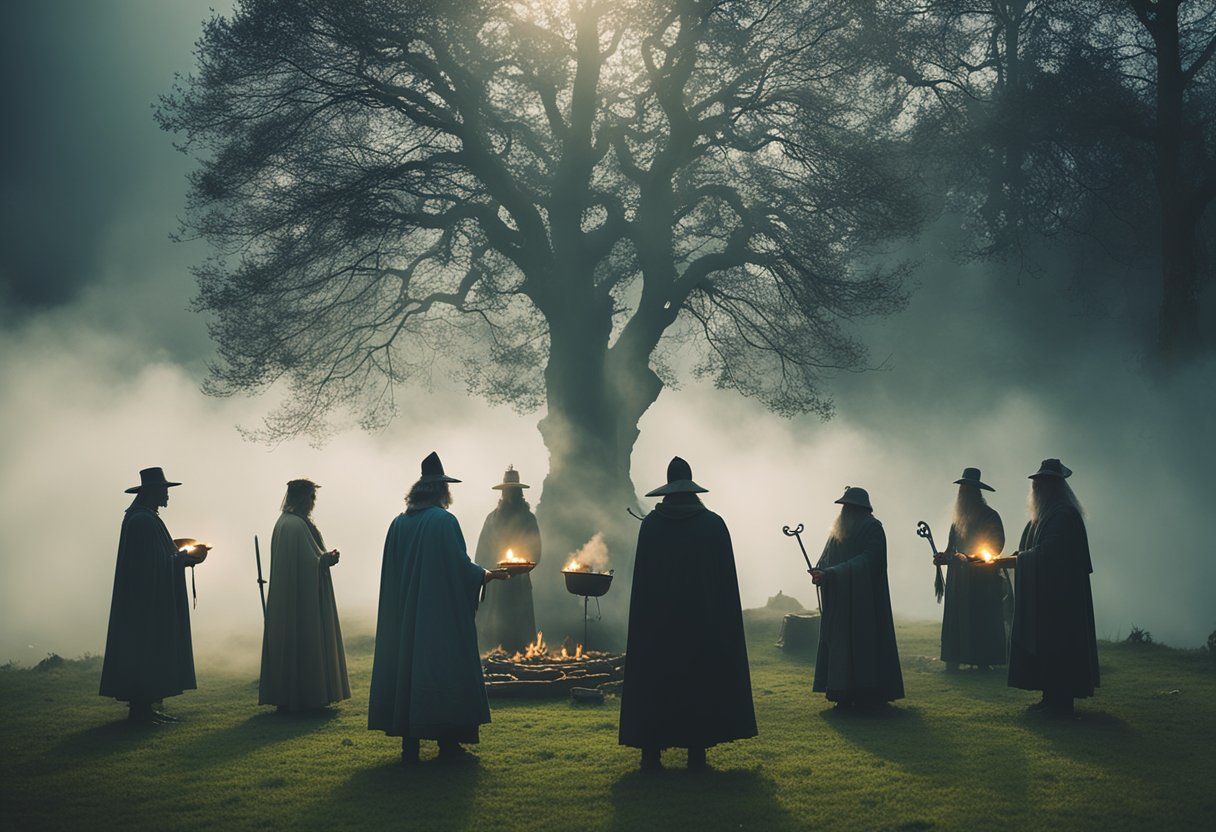
Updated On: April 29, 2024 by Maha Yassin
Ireland teems with a tapestry of myths and legends woven into the fabric of the nation’s identity. From the mystical tales of the Tuatha Dé Danann to the moral parables in old Irish folktales, these stories have not merely entertained; they’ve imparted wisdom and reflected the cultural ethos of the Irish people throughout history. This rich narrative heritage continues to find echoes in today’s society, from the druidic rituals that have undergone a modern resurgence to the symbolic power of the Irish wolfhound, a figure steeped in tradition and loyalty.
Taking a step beyond mere folklore, Irish culture is also a celebration of continuity and reinvention – seen in the steady evolution of the Irish language and the artistry of Irish lace, once stories whispered thread by thread, now part of a living culture. The Seanchaí, keepers of the oral storytelling tradition, have preserved these strands of history, passing down from one generation to the next the essence of what it means to be Irish. Ancient festivals like Bealtaine, sacred wells, and pivotal landmarks like the Blarney Stone serve as relics of the past and as living pieces of culture, embodying the spirituality, the strife, and the unyielding vitality of the Celtic spirit.
Mythological Foundations
In Irish folklore, the root of many tales lies with the Tuatha Dé Danann, a race with divine powers and an integral part of the Mythological Cycle. This narrative tapestry is crucial for understanding the origins and breadth of Irish mythology.
Legends of the Tuatha Dé Danann
The Tuatha Dé Danann are central to Irish mythological lore, often described as the pantheon of Celtic gods and skilled magicians. Legends say they arrived in Ireland, shrouded in mist, after journeying from four mythical cities: Gorias, Murias, Falias, and Findias. They brought with them four magical treasures—the Stone of Fal (Lia Fáil), which would cry out under the rightful king of Ireland; the invincible Spear of Lugh; the unbreakable Sword of Light of Nuada; and the Dagda’s Cauldron, which could feed an army without ever emptying. Through their mighty king Nuada, powerful Dagda, warrior Lugh, and the fierce Morrígan, they embody potent forces of nature and human aspiration.
The Tuatha Dé clashed with other races, such as the Fomorians and the Milesians, the latter eventually defeating them in the mythic Invasion Cycle. As a result, the Tuatha Dé retreated into the Sidhe (fairy mounds), becoming the Aos Sí, or the ‘people of the mounds’. These mounds, such as Newgrange, are linked with many of these legends, suggesting a lasting presence of the Tuatha Dé in the physical and mythological landscapes of Ireland.
The Mythological Cycle and the Lebor Gabála Érenn
We find the narrative of the Tuatha Dé Danann and their subsequent defeat by the Milesians detailed in the Lebor Gabála Érenn (Book of Invasions), which offers a semi-mythical history of Ireland. It synthesises folklore, historical tradition, and biblical references to craft an Irish Genesis story, recording the successive invasions of Ireland by various tribes, including the mythical Tuatha Dé Danann.
This tale presents a cosmology in which the Tuatha Dé Danann, associated with gods and nature magic, underscore the connection between the Irish people and their land, emphasising the cycles of life, sovereignty, and the strife prevalent in existence. The cycle also reflects on themes like the change of power, the juxtaposition of magic and reality, and the integration of pre-Christian deities into a Christianised world as the Aos Sí.
These mythological foundations are not just stories; they whisper of Ireland’s spiritual past, reflecting cultural beliefs and illustrating the robust tapestry of Celtic mythology that still weaves its presence into the cultural identity of modern Ireland.
Cultural and Social Aspects
In modern Ireland, the echoes of ancient practices resonate through cultural expressions and social activities. Our exploration here delves into the continuation of druidic rituals and the pervasive roles and symbols within the fabric of Celtic culture.
Druidic Rituals in Modern Ireland
Druidic traditions, once at the heart of ancient Irish spirituality, still influence contemporary practices in Ireland. We see the remnants of these rituals, particularly during festivals such as Samhain and Imbolc, where fires are lit, and nature is honoured in ways akin to our ancestors. These rituals foster a connection to the land and reflect a belief in the cyclical nature of life. The Tuatha Dé Danann, considered deities of pre-Christian Gaelic Ireland and skilled in magic, are often called upon or acknowledged in these ceremonies, linking modern participants with Ireland’s storied past.
Roles and Symbolism in Celtic Culture
The tapestry of Celtic culture is woven with rich symbols such as the shamrock, associated with St. Patrick and the Holy Trinity, and the intricate patterns of Celtic knots signifying the eternal nature of life and love. We recognise these patterns in modern Irish crafts and artwork, illustrating our unbroken connection to ancestry and tradition. The Sidhe, fairies, and otherworldly beings from Irish folklore still captivate us, influencing literature, music, and art. Their elusive nature and storied past contribute to our understanding of their roles in our heritage as agents of wonder and guardians of nature.
Traditions and Festivities
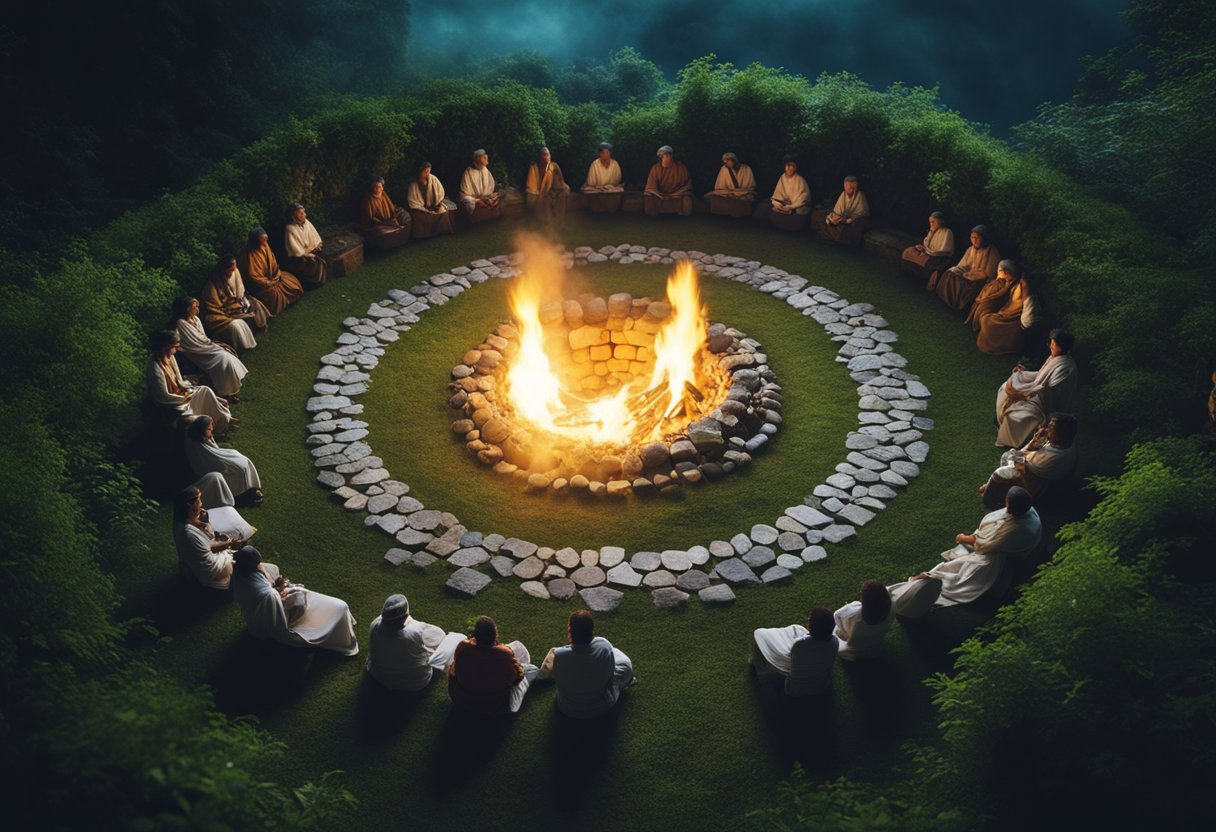
We explore Ireland’s rich tapestry of traditions and festivities, which are steeped in history and imbued with the spirit of the Irish people. From the stone steeped in eloquence to the ancient fire festivals and the historic paths tread by pilgrims, these customs form the vibrant narrative of Ireland.
Folklore Surrounding the Blarney Stone
The Blarney Stone, set within the walls of Blarney Castle, holds a fabled place in Irish folklore. Legend tells us that kissing the stone bestows upon one the gift of eloquence, a trait highly valued in Ireland’s oral storytelling traditions. Visitors from around the world partake in this ritual, often hanging upside down to plant a kiss upon the storied stone.
Bealtaine Festival Customs and History
Bealtaine celebrated on 1 May, marks the beginning of summer in the ancient Celtic calendar. This festival once involved lighting bonfires to honour the sun and encourage growth. Today, towns across Ireland host Maypole dances and crown a May Queen as part of contemporary celebrations, blending old rituals with new merrymaking.
Irish Pilgrimage Routes and their Stories
Pilgrimage is an enduring tradition in Ireland, with many routes leading to sacred sites layered with stories of saints and scholars. Each pilgrimage culminates where the secular and divine meet, such as the summit of Croagh Patrick or the ancient paths to St. Brigid’s Holy Well. These journeys blend physical endurance with spiritual introspection and are a testament to the enduring nature of Ireland’s holy heritage.
Folklore in Expression and Arts

Folklore is woven into the fabric of cultural expression and the arts, serving as a key medium to preserve and celebrate cultural identities. In this section, we explore how elements of Celtic folklore manifest in tattoos and proverbs, revealing the underlying implications for crafts and culture.
The Art of Celtic Tattoo Symbolism
Celtic tattoos are renowned for their intricate knots, crosses, and spirals, symbolising different life aspects and spiritual beliefs. The Celtic knot, a symbol with no beginning or end, reflects the eternal cycles of life and the interconnectedness of all things. The Celtic cross, an emblem that merges the Christian cross with a circle, signifies unity, faith, and the connection between the physical and spiritual realms. These tattoos are more than mere decoration; they are a physical representation of heritage, and a personal interpretation of ancient wisdom inked onto the skin.
Irish Proverbs and Their Meanings Across Cultures
Irish proverbs are timeless knowledge capsules, often encapsulating past generations’ collective wisdom in succinct words. A common proverb, “Níl aon tinteán mar do thinteán féin,” translates to “There’s’ no hearth like your own hearth,” highlighting the valued place of home in Irish culture. Another, “Mol an óige agus tiocfaidh sí,” meaning “Praise the young, and they will flourish,” encourages the nurturing of youth to ensure a prosperous future. Rich in metaphor and context, these sayings transcend cultural boundaries and continue to impart relevant lessons far beyond their Celtic origins.
Myths and Teachings
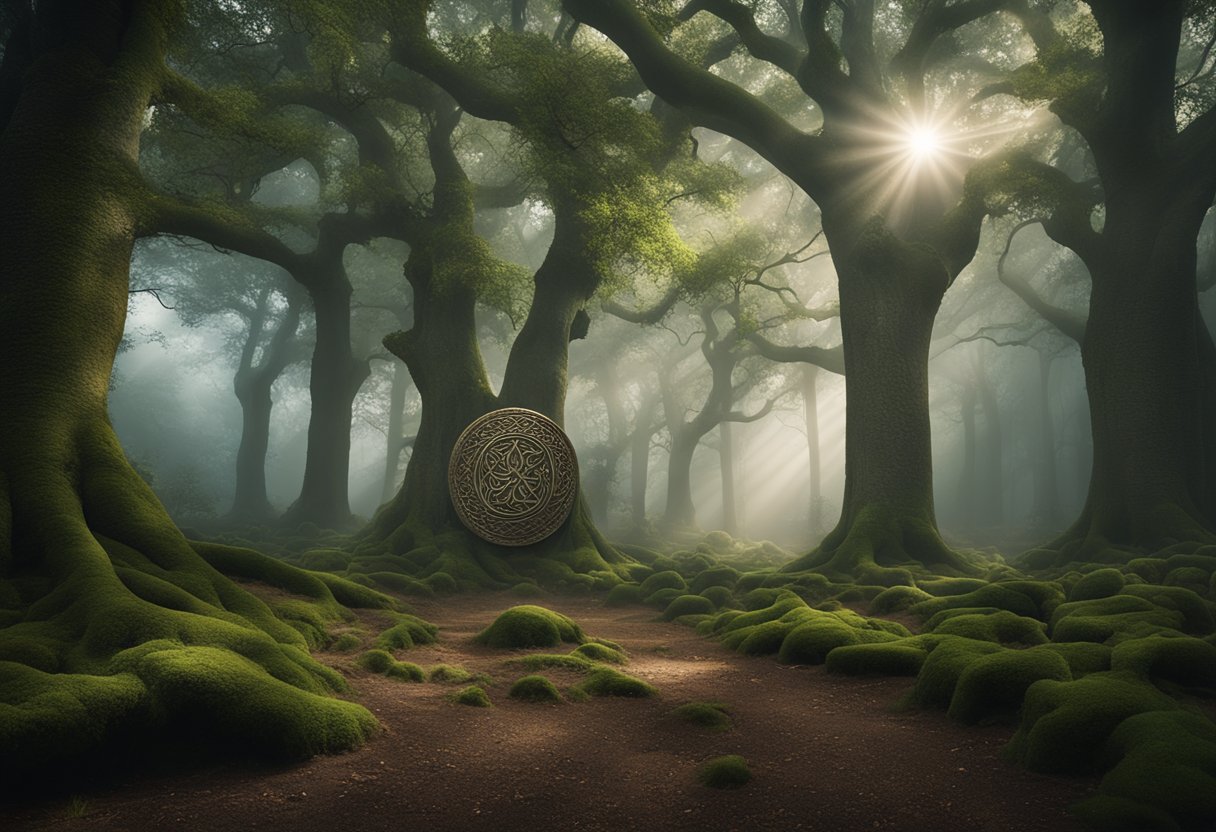
Our exploration delves into the tapestry of Celtic mythology, where the mystical and the martial intertwine. We shall examine the role of fairies and the symbolism behind mythical battles.
The Role of Fairies in Irish and Scottish Lore
Fairies, or the Aos Sí, are revered and feared in Irish and Scottish lore. These ethereal beings, often described as powerful and capricious, inhabit an otherworld they call the Sidhe. Fairies are believed to wield significant magic, influencing the natural world and human affairs. Our ancestors regarded the Sidhe respectfully and cautiously, creating customs and rituals to maintain peace with these supernatural neighbours.
Mythical Battles and Their Symbolism in Irish Lore
Mythical battles in Irish lore are not just tales of conflict but are imbued with deep symbolism and serve as metaphors for natural forces and human emotions. Legendary clashes, such as the epic Tuatha Dé Danann’s wars, embody life, death, and transition themes. The Battles of Magh Tuireadh are iconic, reflecting a struggle for power and sovereignty, often incorporating elemental magic that underscores the Celts’ profound connection to nature and the land.
Language and Oral Traditions
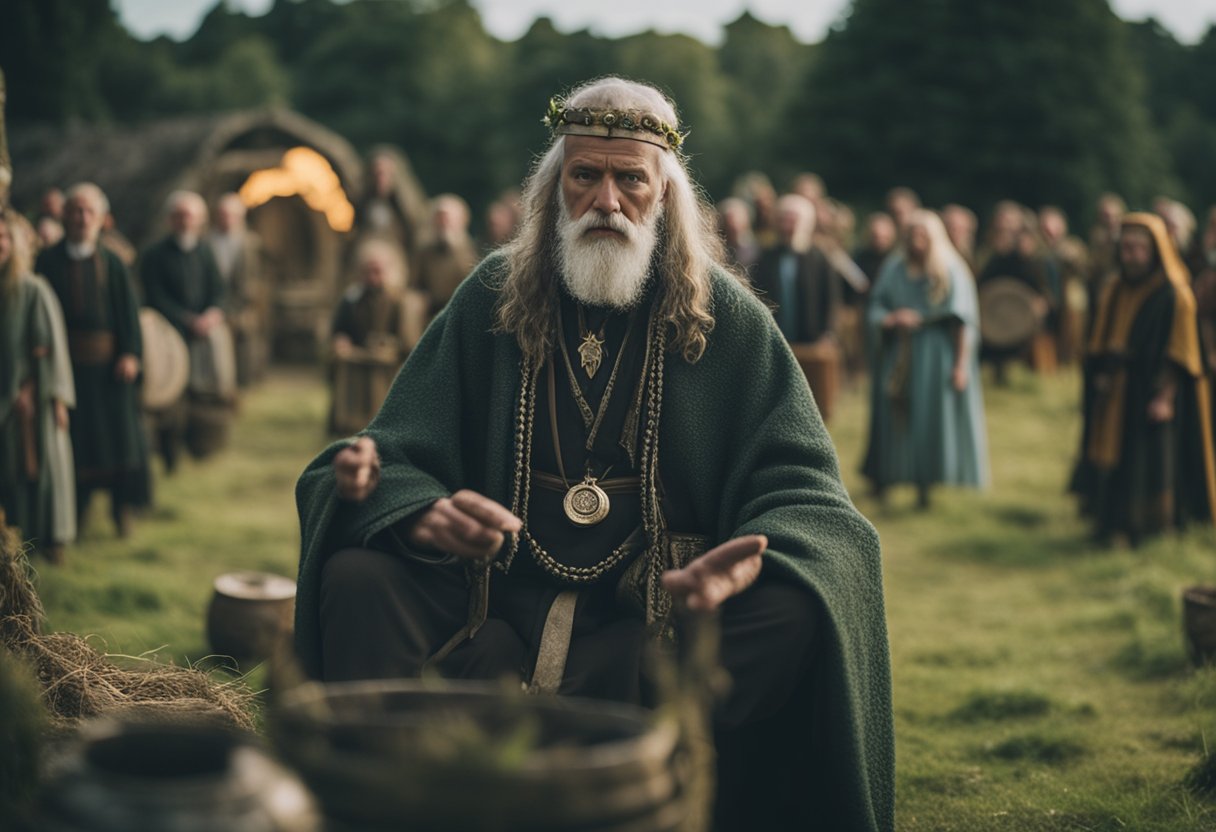
The vibrancy of Irish culture is spectacularly captured in the weave of our language and storytelling. Interwoven with rich folklore, these elements have been pillars supporting the perpetuation of traditions and tales through generations.
The Evolution of the Irish Language and Folklore
The Irish language, known as Gaeilge, has traversed a complex journey from its earliest form to the modern tongue we recognise today. Its rich vocabulary and syntax have deep roots in oral tradition, rendering it an integral medium for conveying folklore and legends. Integral to Irish identity, the language has been eternally entwined with Ireland’s stories, framing narratives ranging from rural life’s mundanity to the fantastical adventures recounted in Irish literature.
Over the centuries, the language has experienced periods of decline, battling external forces and cultural shifts. Yet, it has been revived as a cultural expression and identity conduit. The commitment to its preservation, reflective of a broader global movement to honour linguistic diversity, is echoed in fields such as education and digital media, where Gaeilge finds new life.
Seanchaí: The Irish Oral Storytelling Tradition
The seanchaí, custodians of the spoken word, have significantly impacted the perpetuation and evolution of oral tradition within Irish culture. Through their spellbinding recitals, these venerable storytellers secured the passage of legends and lore from one generation to the next. They articulated tales for entertainment, historical narratives, and familial anecdotes, which weaved Irish communities and moral fabric.
Their subtle yet powerful art sustained an intimate connection with listeners, unifying communities through a shared heritage. This tradition continues, albeit in contemporary forms, influencing and reflecting the diverse spectrum of Irish literature, from poetry to prose. In modern times, the seseanchaí’sole expands beyond local firesides to global stages, whereby their voices perpetuate the wisdom and wit of Irish ancestry, ensuring the stories of old remain a living stream within the cultural consciousness.
Legendary Sites and Vistas
Ireland’s tapestry of folklore is woven into the country’s landscapes, from the rugged coastlines to the wild heart of Connemara, each place steeped in tales and myth.
The Folklore of Irish Coastal Towns
Irish coastal towns are not just scenic havens but are steeped in mythology. Take, for example, the lore surrounding the GiGiant’sauseway, where the legendary Finn McCool is said to have built a causeway to Scotland. Tales of merrows, Irish mermaids, and other sea folk often originate from these coastal towns, adding a magical layer to their charm.
Connemara Folklore and Landscape
Connemara is a land etched with stories as rugged as its terrain. Its landscape of misty mountains and serene lakes is where the legends of fierce mythological warriors and faerie folk come alive. The story of the Pirate Queen Grace O’Malley, who ruled the seas, is a testament to the rich history embedded in this part of Ireland.
Our journey through these legendary sites and vistas reaffirms the centrality of folklore in Irish culture. Each place holds a story, and each vista offers a glimpse into the past.
Celtic Connections and Global Influence
Celtic myths have rippled through time, influencing global folklore and intertwining with the narratives of other cultures, notably that of Norse mythology. These storied interactions have vaulted Celtic stories from local firesides to the hearts of a worldwide audience, enriching the tapestry of global mythology.
The Influence of Norse Mythology on Irish Folklore
The Norse and the Celts, two seafaring cultures, came into contact through trade and raids, leading to a cultural exchange that wove elements of Norse mythology into Irish folklore. Norse gods and Irish deities often share traits and stories, reflecting their shared themes of exploration, warfare, and the supernatural. For instance, similarities can be seen in the warrior ethos of the Norse Valkyries and the Irish Morrigan or the parallels between Odin, the Norse all-father, and the Dagda, the Irish father figure of the gods. These integrations symbolise a fusion of beliefs that underscore the fluid boundaries of ancient spirituality.
International Tales of Rainbows and Pots of Gold
Our global fascination with rainbows and pots of gold can be traced back to many cultures, with Celts attributing special significance to the rainbow as a bridge between worlds. The tale of the leleprechaun’sot of gold at the end of the rainbow is quintessentially Irish. Still, it has been embraced by various cultures, evolving into a universal emblem of fortune and elusive treasures. This narrative has crossed borders, permeating stories from the Americas to Asia, and is often associated with luck and the aspiration to find hidden riches. It is a testament to a single mythological concept’s profound impact on the human imagination across different societies.
Preserving the Past
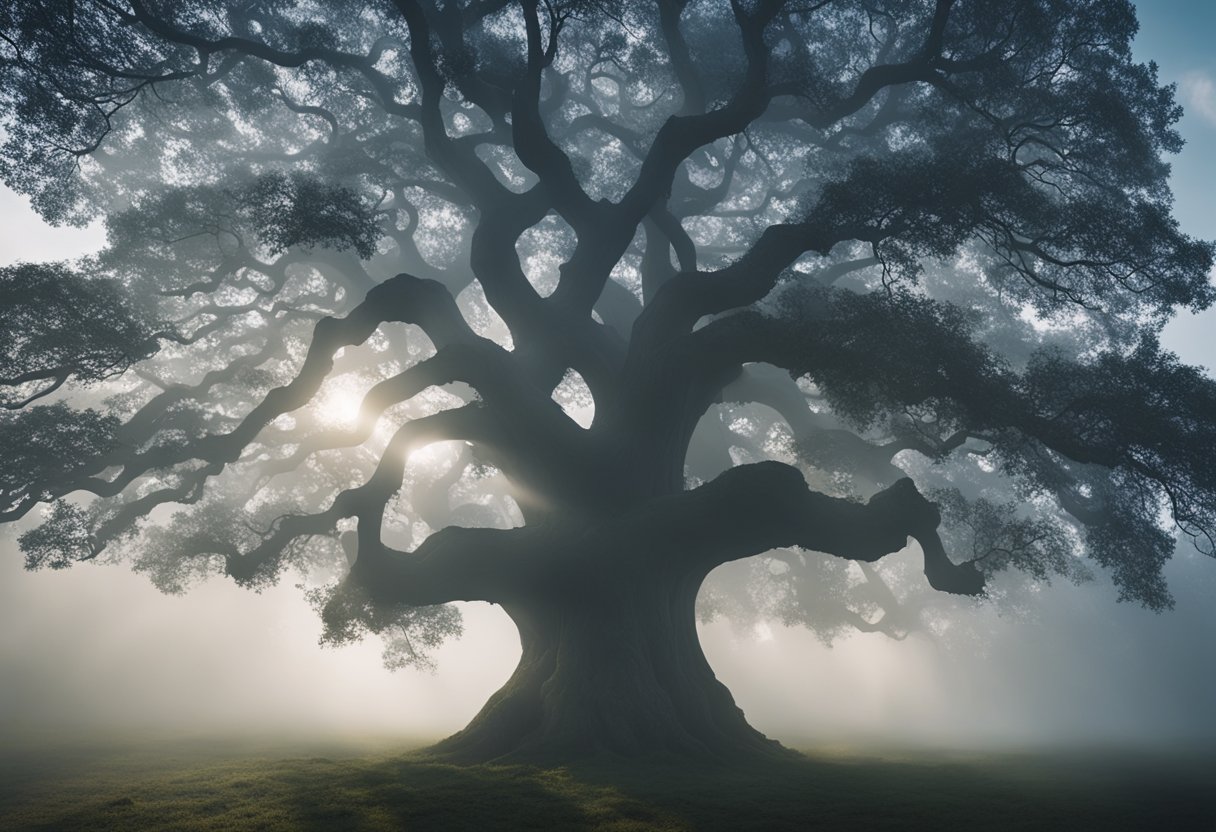
Safeguarding Irish culture’s tangible and intangible elements is crucial to ensuring its enduring legacy. From the physical majesty of sacred wells to the digital conservation of narratives, dedicated preservation efforts keep the essence of Irish history and mythology alive.
Sacred Wells and Their Significance in Celtic Culture
Sacred wells are integral to our Celtic heritage, often revered as natural shrines embodying healing, blessings, and historical continuity. Their significance in Celtic culture is profound; they connect to the spiritual world and are central to our community rituals and individual meditations. We acknowledge these wells as water sources and spiritual reservoirs, each with its own story and ceremonial importance, deeply woven into our local traditions and identity.
The preservation of these sites becomes paramount in the face of modernisation. Through meticulous maintenance and respectful public education, these wells are revered as more than historical artefacts; they are symbols of a belief system that respects the interplay of nature and the divine. Our initiatives focus on protecting these wells’ physical integrity while ensuring their stories and customs are passed down to future generations.
The Preservation of Folklore in Digital Archives
The move to capture our oral and written folklore in digital archives is a testament to our dedication to safeguarding our past for the future. By meticulously cataloguing tales, songs, and historical accounts, we’re creating a repository that is not only vast but easily accessible for anyone keen to explore the riches of Irish cultural heritage. As we transition from the spoken word to digital formats, we preserve the essence of our stories, ensuring their survival beyond the limitations of memory and time.
Digital archives serve as modern-day troves of our shared history, allowing us to expand our reach to a global audience. These platforms are not static; they grow and evolve, enriched by ongoing contributions from communities and scholars alike. Our efforts centre on keeping the spirit of our folklore alive, enabling us to recount our wisdom and wit through the power of technology. By embracing digital preservation possibilities, we continue to weave the tapestry of Irish culture with ancient and new threads.
Contemporary Folklore and Legacy
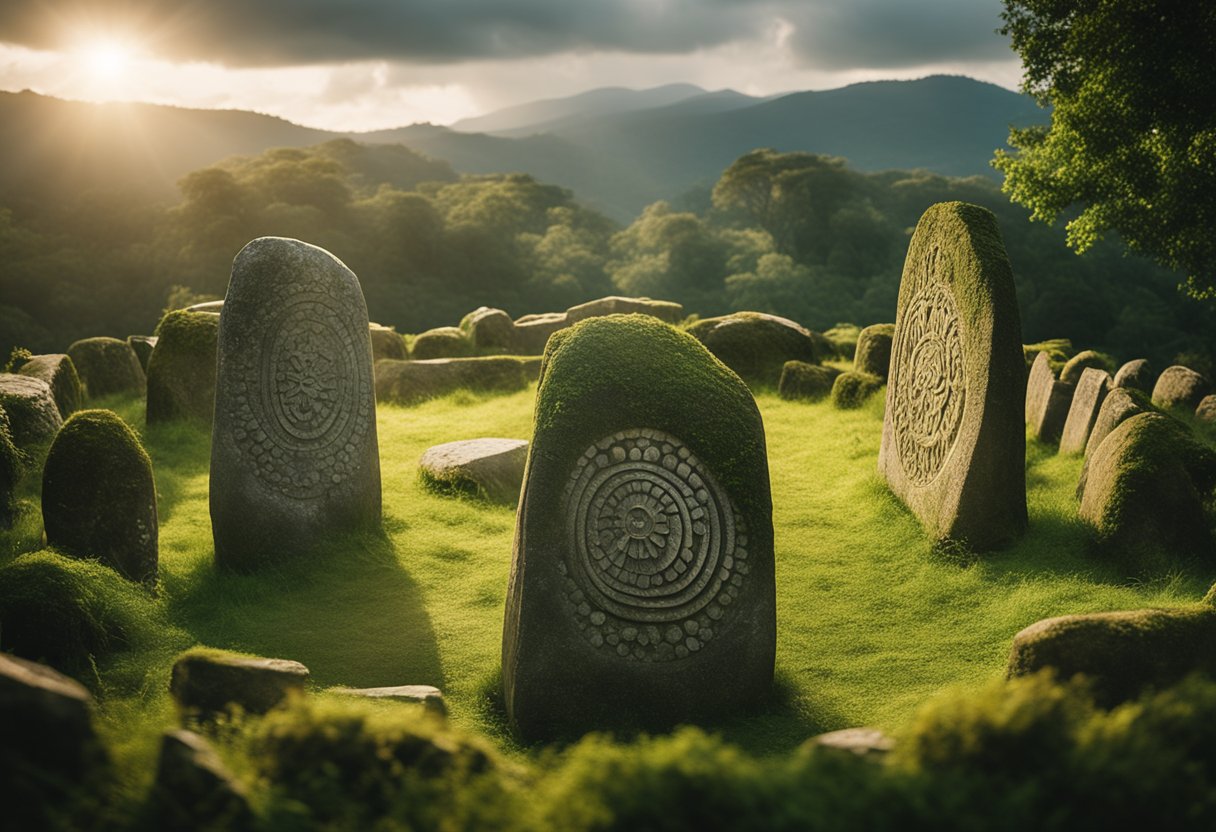
Contemporary literature and the resurgence of ancient crafts play pivotal roles in preserving and celebrating folklore in the evolving tapestry of Irish culture.
Irish Folklore in Contemporary Literature
The enchantment of Irish legends finds new life in modern novels and poems. Today’s scholars weave traditional themes with fresh narratives, ensuring that the essence of our folklore is not lost but has evolved. For instance, works like Hannah KeKent’s “e Good People “immerse readers in the world of fairies and Irish beliefs while daring to explore the complex interactions between ancient lore and the modern psyche.
The Revival of Ancient Celtic Crafts
Simultaneously, there has been a stirring revival of ancient Celtic crafts, a rekindling of skills once thought endangered. Artisans across Ireland are reconnecting with practices such as hand-weaving and intricate metalworking, infusing their creations with symbols and motifs steeped in folklore. We recognise crafts as artefacts and vibrant carriers of our collective memory and identity. This resurgence has been crucial in keeping the spirit of Irish folklore alive, offering both a link to the past and a bridge to the future.
Conclusion
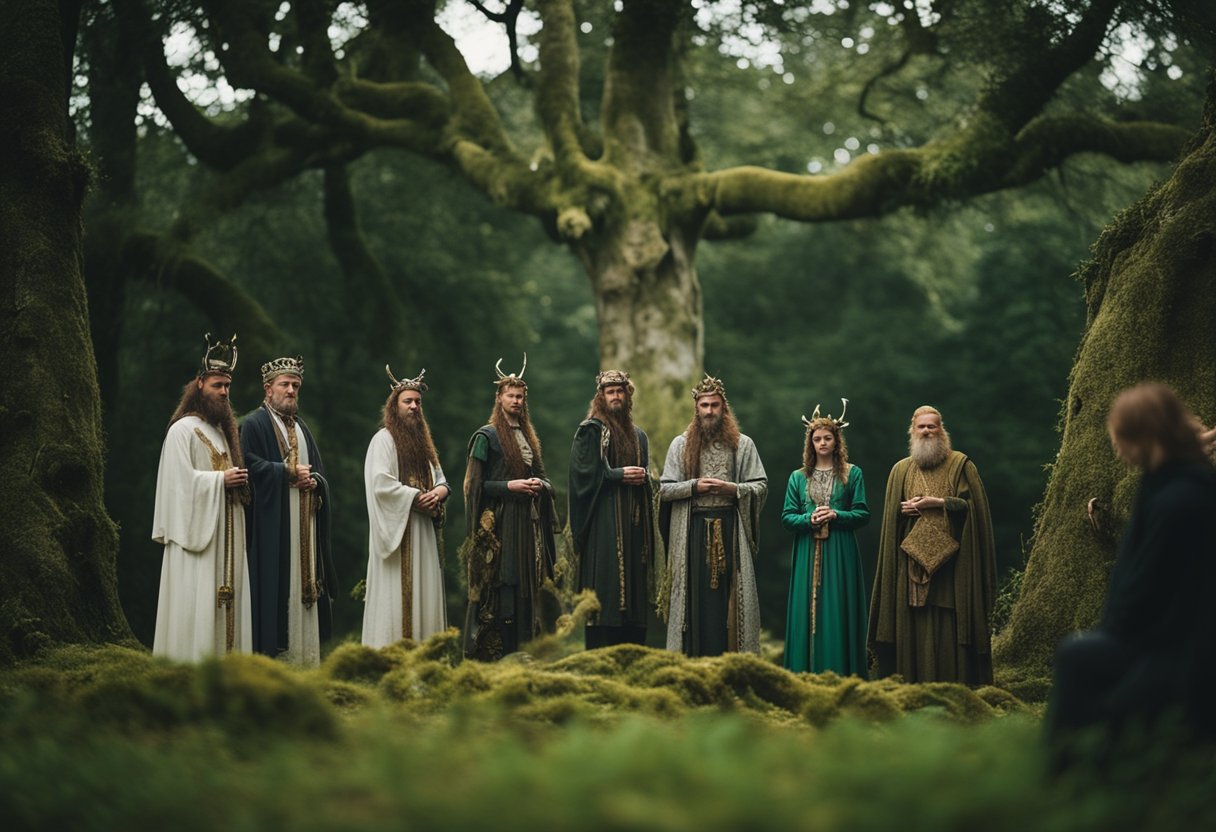
In traversing the rich tapestry of Irish folklore, we have encountered many tales stretching from the mystical Tuatha Dé Danann to the windswept coastlines of Connemara. Our exploration has led us through ancient rituals, emblematic symbols like the Irish wolfhound, and the whispers of sacred wells.
WeWe’veelebrated the Bealtaine festival, mused over the enigmatic tales of rainbows and pots of gold, and reflected on the wisdom ingrained in Irish proverbs. The Seanchaí tradition highlighted the timeless art of oral storytelling, while the persistence of the Irish language illuminated the evolution of such folklore across generations.
Our cultural quest revealed Ireland’s Storied heritage, examining its influence on and by Norse mythology and the intertwining narratives that extend to distant Breton shores. We delve into the profound realm of mythology, perceiving the role of fairies in Irish and Scottish lore, understanding the significance of the hearth, and uncovering the myths of the underworld.
Our pilgrimage through stories of ancient Ireland also explored monasticism, Irish lace craftsmanship, and the shamrock’s resistant symbols. In the intricate dance of history and myth, the legend of Tir na nÓg and the Giant’s Causeway stood as markers of Ireland’s perpetual connection to tales of old.
Ancient rituals, sacred gatherings, and cultural artefacts like the bodhrán provided a window into IrIreland’sast past and present. As we traced the steps of Irish emigration, the enduring spirit of folklore travelled with us from the remote mountain ranges of Ireland to the global phenomenon of St. PaPatrick’say.
Here, at the culmination of our journey, we extend gratitude to the people, stories, and landscapes that have imbued such richness into Irish culture. Our shared heritage, collective memory, and the essence of our identity continue to weave these tales into the fabric of our lives.
FAQs
What pivotal role did the Tuatha Dé Danann play in Irish mythology?
The Tuatha Dé Danann were a supernatural race, significant in Irish mythology as former gods who became the ancestors of the Irish. Known for their magic expertise and battle skills, they represent the pantheon of pre-Christian Ireland and played a crucial role in its mythological history.
How do the Tuatha Dé Danann influence contemporary Irish folktales?
Contemporary Irish folktales often draw from the legacy of the Tuatha Dé Danann, incorporating elements such as magic, enchanted objects, and epic battles. These ancient beings continue to influence narratives and are often depicted as wise and powerful figures within modern storytelling.
What moral lessons are derived from tales involving the Tuatha Dé Danann?
Tales involving the Tuatha Dé Danann often embody moral lessons such as the value of wisdom over brute strength and the importance of leadership and responsibility. Stories of their reign and battles underscore themes of honour, sacrifice, and the enduring nature of the spirit.
What are the defining characteristics and symbols attributed to the Tuatha Dé Danann?
The Tuatha Dé DaDanann’s distinguishing characteristics include their otherworldly origins, mastery of magic, and association with ancient megalithic sites. Symbols commonly connected with them include the harp, which signifies their cultural refinement, and the cauldron, which represents abundance and regeneration.
How are the Tuatha Dé Danann depicted in the context of Druidic rituals in modern-day Ireland?
In modern-day Ireland, Druidic rituals often reference the Tuatha Dé Danann as embodiments of natural forces and ancestral wisdom. Though reconstructed and contemporary, these rituals honour the Tuatha Dé Danann through seasonal celebrations and ceremonies rooted in the cyclical nature of the earth.
In what way does the Irish wolfhound serve as a symbol in Irish folklore and legend?
In folklore, the Irish wolfhound symbolises loyalty, protection, and nobility. This majestic breed is often a guardian and valued companion to figures such as warriors and chieftains.






